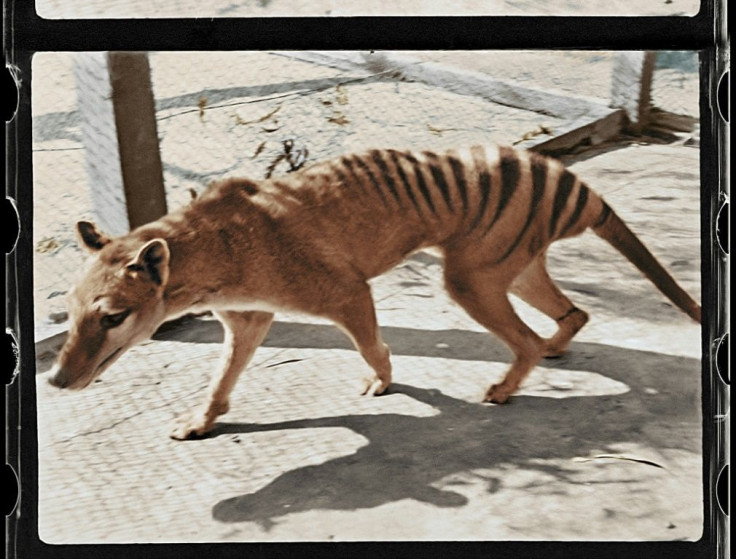Tasmanian Tiger Resurrection: How Scientists Plan To De-Extinct The Animal In Multimillion-Dollar Project
KEY POINTS
- Researchers have partnered with a U.S. company for the initiative
- They hope to bring Tasmanian tigers back to life within a decade
- The effort could help other creatures that are at risk as well
A team of Australian researchers has joined hands with a U.S. company for an ambitious project. Their aim is to resurrect the Tasmanian tiger, nearly nine decades after the species was declared extinct.
The team is hoping to reintroduce the striped carnivorous marsupial, once found across Australia, into the wild using stem cells and gene-editing technology and that too within a decade.
Scientists at the University of Melbourne announced Tuesday that they are collaborating with a genetic engineering company, Colossal Biosciences, to de-extinct the Tasmanian tiger, officially known as thylacine, according to HuffPost. The Texas company has been championing the "de-extinction" movement and has been working toward putting the woolly mammoth back in the Arctic tundra.
The project comes after the University of Melbourne received a $3.5 million donation to set up a lab dedicated to thylacine genetic restoration.
"The Tasmanian tiger is iconic in Australian culture," Andrew Pask, a professor at the University of Melbourne and head of its Thylacine Integrated Genetic Restoration Research Lab, said in a statement. "We're excited to be part of this team in bringing back this unique, cornerstone species that mankind previously eradicated from the planet."
Pask, who is leading the initiative, said the de-extinction of the thylacine could also help other Australian species that are at risk of extinction.
"We can now take the giant leaps to conserve Australia's threatened marsupials and take on the grand challenge of de-extincting animals we had lost," Pask added. "With this partnership, I now believe that in ten years' time we could have our first living baby thylacine since they were hunted to extinction close to a century ago."
So excited to partner with @itiscolossal @federallamm to continue our work on the thylacine - very exciting times ahead for marsupial biology! pic.twitter.com/QV9tYyOLXo
— Andrew Pask (@AJ_Pask) August 16, 2022
Thylacines, which are coyote-sized animals, are known to be the only marsupial apex predators that lived in modern times. They were largely found in the Australian island of Tasmania after disappearing from other areas about 2,000 years back.
When European settlers on the island began losing livestock in the 1800s, they thought it was because of the thylacines and started to hunt the carnivorous marsupials down. However, it is believed that feral dogs and the bad management of human habitat were behind the loss of livestock in most cases.
A thylacine named Benjamin is believed to be the last of the species. It died at a zoo in Hobart, Tasmania, in 1936. The species was officially declared extinct following its death.
For the thylacine de-extinction project, researchers will construct a detailed genome of the animal and compare it with the fat-tailed dunnart, which is the closest living relative of the extinct animal, according to CNN.
"We then take living cells from our dunnart and edit their DNA every place where it differs from the thylacine. We are essentially engineering our dunnart cell to become a Tasmanian tiger cell," Pask explained.
The team would then "turn that cell back into a living animal," the researcher added.
The cell would be transformed into an embryo using stem cell and reproductive techniques. Dunnarts could be used as surrogates for the process.
Although the fat-tailed dunnart is smaller than a Tasmanian tiger, it can still play the role of a surrogate mother because all marsupial babies are tiny at birth.
"Our ultimate goal with this technology is to restore these species to the wild, where they played absolutely essential roles in the ecosystem. So our ultimate hope is that you would be seeing them in the Tasmanian bushland again one day," Pask said.
Pask also noted that the thylacines created in this manner would first be reintroduced in controlled areas.
The team believes it would be easier to de-extinct Tasmanian tigers when compared to woolly mammoths since the marsupials are much smaller in size. Woolly mammoths also take far longer to gestate than Tasmanian tigers.

© Copyright IBTimes 2025. All rights reserved.






















